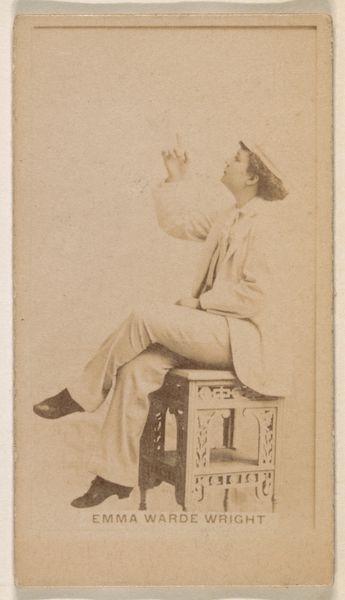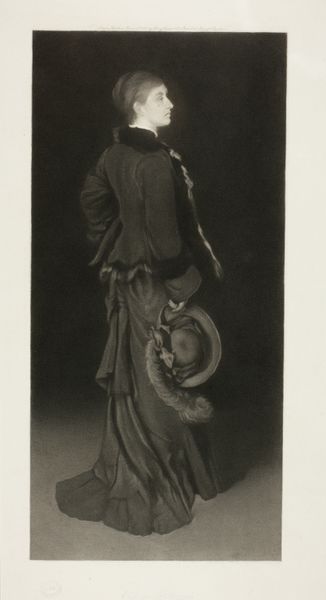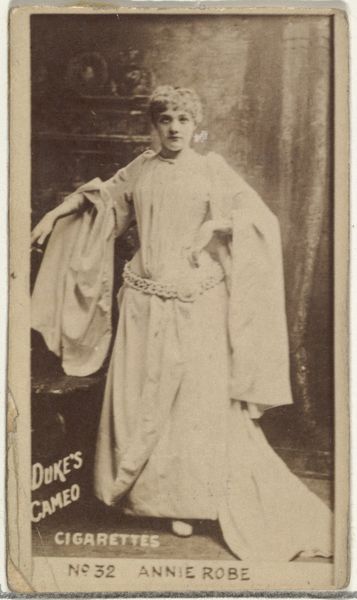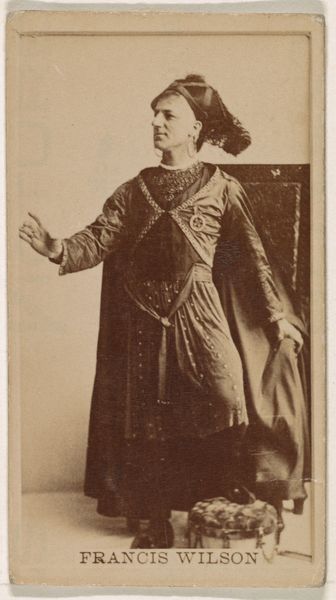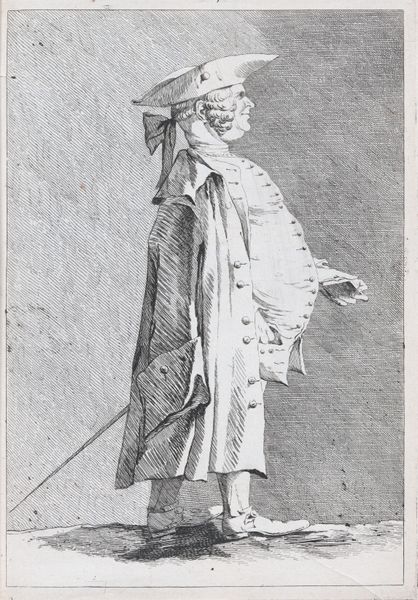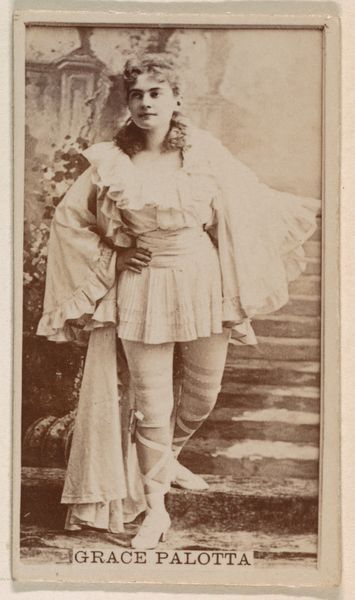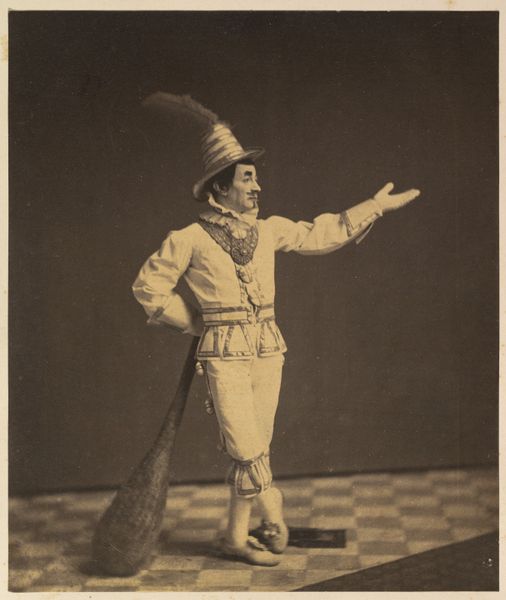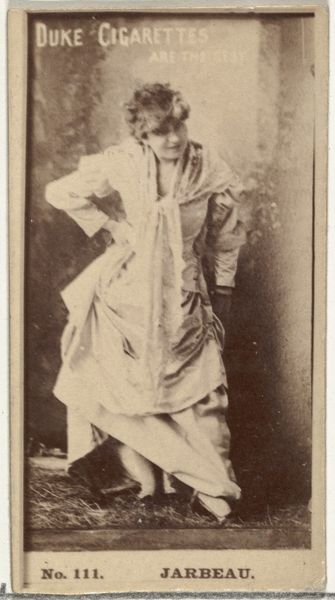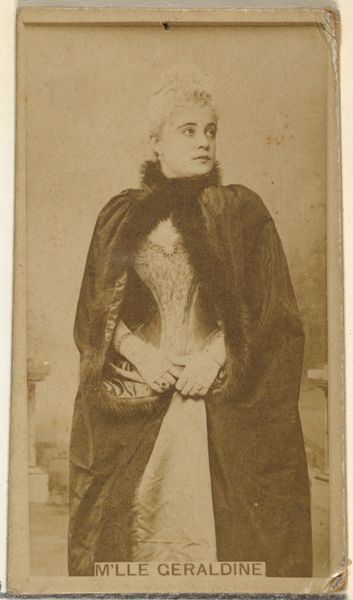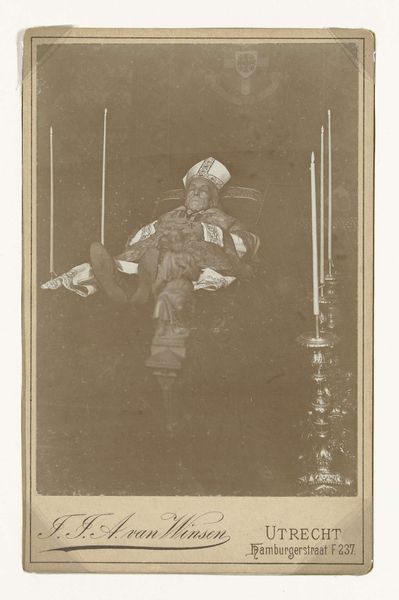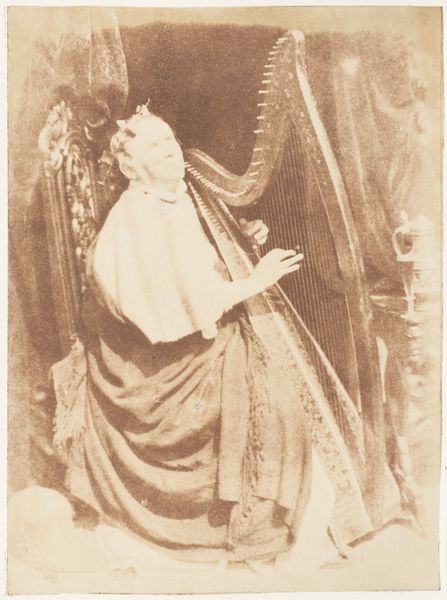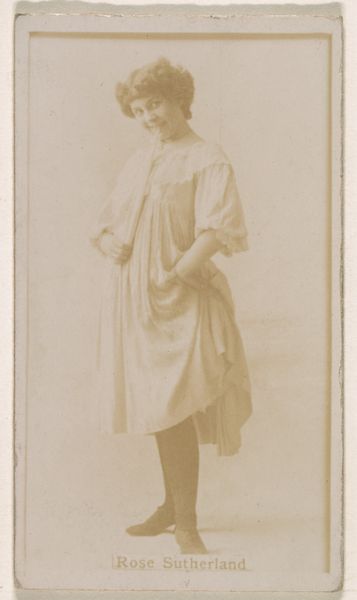
Copyright: Public domain
Editor: This is Félix Nadar's "Charles Deburau, Pierrot listening," a gelatin-silver print from 1855. It’s such a striking image, especially how the soft light renders the fabric of Pierrot's costume. What particularly stands out to you about this photograph? Curator: It's important to consider Nadar's choice of photography, a relatively new technology at the time. He elevates a popular, theatrical figure – Pierrot – through a process that democratizes image-making. This gelatin-silver print makes Pierrot and Deburau, a working class performer, widely accessible. What does that elevation of popular culture, achieved via these new modes of reproduction, suggest to you? Editor: I guess it challenges the hierarchy of art itself. Before this, would paintings or sculptures have been the only way to really immortalize someone? Now, through mass production, someone like Deburau becomes eternally visible. Curator: Precisely. Photography as a medium directly intersects with labor and industrialization. Consider also the materials involved: the chemicals, the paper, the studio space itself. It’s not just about capturing an image, but also about a material transformation, a shift in how images are produced, circulated, and consumed. The materiality of the print is thus central to its significance. Do you see how Nadar uses that to his advantage? Editor: So the very *stuff* of the photograph reinforces Nadar's artistic and even social intentions. I hadn’t thought about photography that way, more as capturing something than making something new. Curator: The “making” is the crucial point. Nadar wasn't merely documenting; he was actively participating in the material culture of his time, questioning what constitutes 'art' through his means of production. Editor: This makes me appreciate the layers of meaning packed into a seemingly simple photograph. Thank you for highlighting the significance of material processes. Curator: Indeed. Seeing art as tied to labor and material conditions offers a fresh way to interpret its impact.
Comments
No comments
Be the first to comment and join the conversation on the ultimate creative platform.
